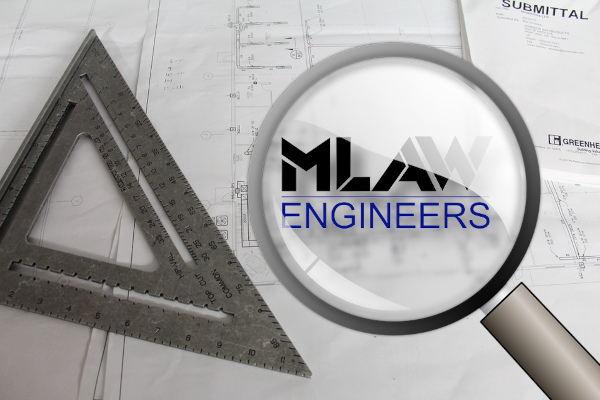Featured Article

Most single and multi-family residences and significant number of small to mid size commercial structures utilize wood framing for structural support.
Terms:
- Timber Framing – refers to heavy timber 8″ x 8” or larger.
- Lumber – surface finished (S4S) wood members equal to or smaller than 6″ x 6″ or 2″ x 14″.
- GLU-LAM – glued laminated layers of wood shaped to create strong, larger framing members sized from 3″ x 12″ to 7 ¾” x 36″ or larger.
- LVL – laminated veneer lumber similar in use to Glu-Lam.
- Para-Lam – small diameter, long strips of wood glued together to form framing members similar in use to Glu-Lam.
- Rafter – sloped member holding up roof used in repetitive arrangements.
- Joist – horizontal members holding up floors or flat roofs – used in repetitive arrangements.
- Beam or Girder – horizontal structure member holding joists or other elements.
- Column or Post – vertical structural member supporting beams or other elements.
- Studs – Vertical member (usually 2″ x 4″ or 2″ x 6″) used repetitively in a wall.
- Plates – horizontal members usually 2″ x 4″ or 2″ x 6″ at bottom and top of studs.
Framing problems frequently start with poor design or no design. If its too complicated for the home designer to figure out, let the framer design it. Much light framing is code controlled, so this approach can work if the framer and building inspector know the code and are conscientious.
If the framing is long span, or complicated or cut by plumbing, wiring or A.C. ducts, problems can arise and an engineer is needed.
Many times inadequate framing does not show up for several years, when a combination of unusual loads plus natural deterioration or wood sag produce distress such as sagging roofs, ceilings, garage headers, or cracking walls and springing floors. Wood has the property of being very strong and stiff initially, but if over loaded or subjected to moisture change can sag with time.
Often damp rot or weathering causes loss of strength. Other framing problems could include bad lumber or wrong specs and grades, poorly manufactured trusses, damaged trusses or lumber due to improper storage at job, removal of support walls or beams due to construction by occupants or other amateurs later during remodeling. Another source of problems could include adding load after construction such as waterbeds, pool tables, tile roofing, or unusual storage loads such as multiple file cabinets.
Explore
Excavation Safety
Excavations are common on construction sites in the form of pits, trenches, and cuts adjacent to a hillside. Excavations are necessary for construction but can be dangerous. Stiff to hard clays seem very strong and will stand temporarily on vertical cuts for great depths. Clays are, however, deceiving. While the intact strength may be high,…
Read MoreExpansive Clay and Foundations
This subject has received attention from many sources for many years, but nevertheless remains a hot topic with regard to design and construction of lightly loaded, shallow foundations in Central Texas. The prime design problem for these foundations is swelling or expansive clays. A shallow foundation is typically found under a residence or small to…
Read More
